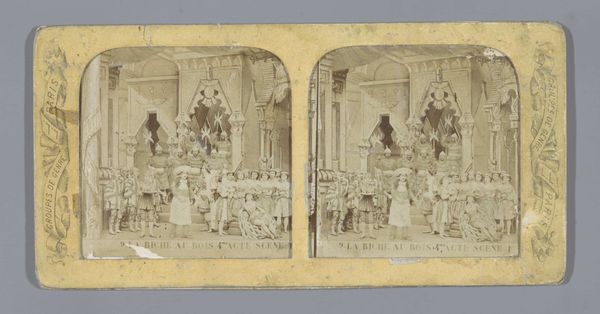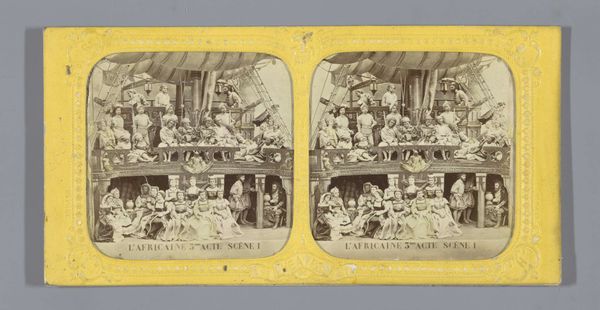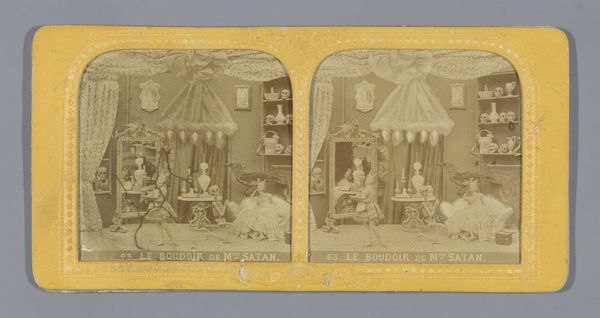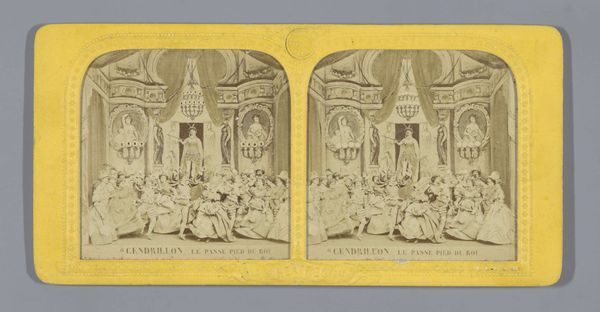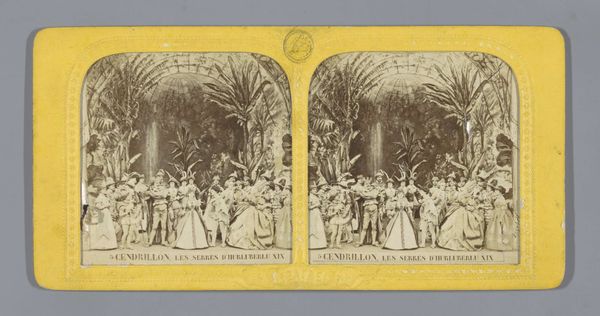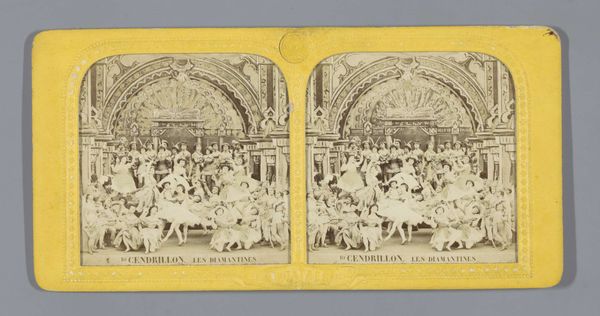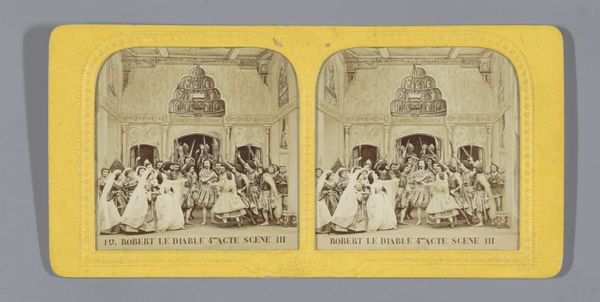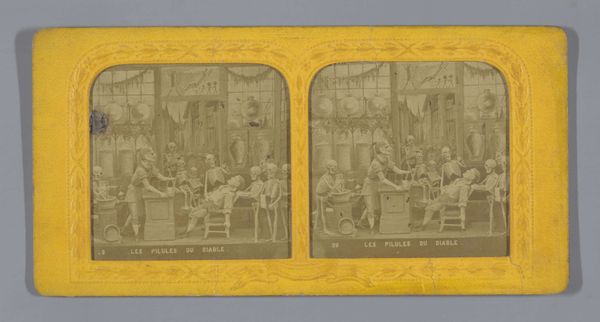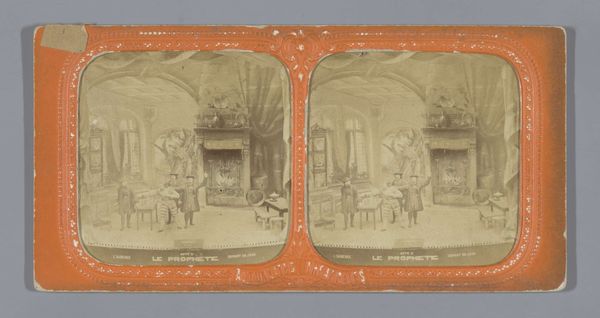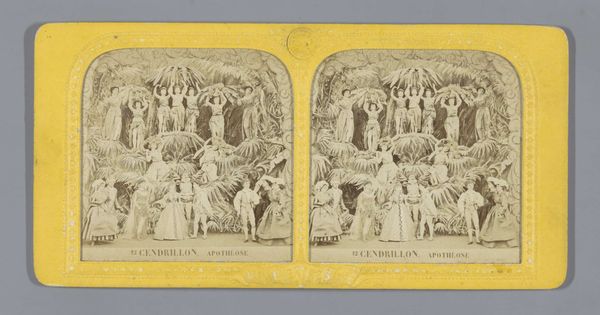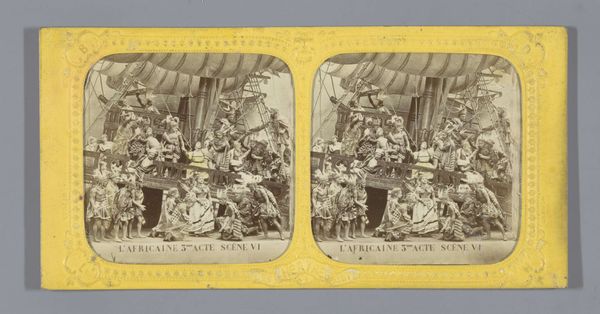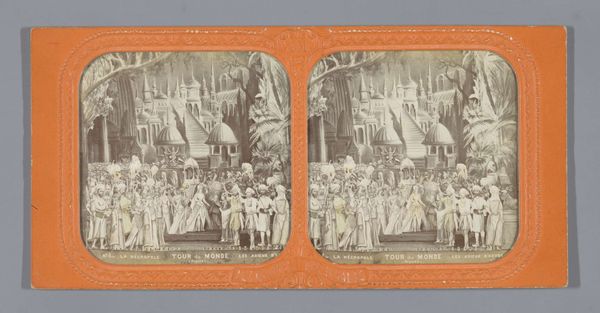
Dimensions: height 87 mm, width 177 mm
Copyright: Rijks Museum: Open Domain
Curator: This is a stereoscopic photograph dating from 1873-74 by Charles Dauvois, titled "Fourth Act, Fourth Scene of La biche au bois.” The scene depicts a performance of this theatrical play, very much in the style of Romanticism. Editor: My first impression is one of contained drama, like a perfectly arranged tableau vivant. The almost monochrome palette adds a sense of old-world elegance, although it’s difficult to say that it captures genuine emotions. The set and costuming look rather staged. Curator: Staged indeed! This form of photography, popular then, froze theatrical moments. It offers a window into the cultural values and public role of theatre in late 19th-century society. The very act of re-presenting theatre through photography says a lot about bourgeois society's aspirations for cultural refinement. Editor: Absolutely. Visually, the scene relies heavily on archetypes: the benevolent rulers under the ornamented canopies, surrounded by supplicants. Even without knowing the play, the image radiates a clear hierarchy, almost a storybook quality of goodness prevailing. I see such power in the symbolism of how space is organised, really inviting a deep dive into collective storytelling. Curator: And consider that these stereo cards weren’t simply mementos; they were often mass-produced. Thus, what we're viewing isn’t merely art; it’s industry, shaped by a market that craved these stylized portrayals of stage spectacle, influencing how the play itself was received and remembered. The public and the artist play intertwined roles, you could argue. Editor: It's a really interesting perspective, considering this photograph acts as its own stage—preserving a single moment for continued reflection. In a way, it achieves its immortality through its symbols, creating resonance for future viewers. Curator: Well said. These glimpses remind us that art is seldom created or viewed in a vacuum. The surrounding culture and the institutional forces at play all have their say in what gets made, seen, and remembered. Editor: Precisely. Examining images, then, allows us to better understand these broader patterns, really opening new and important cultural paths.
Comments
No comments
Be the first to comment and join the conversation on the ultimate creative platform.
